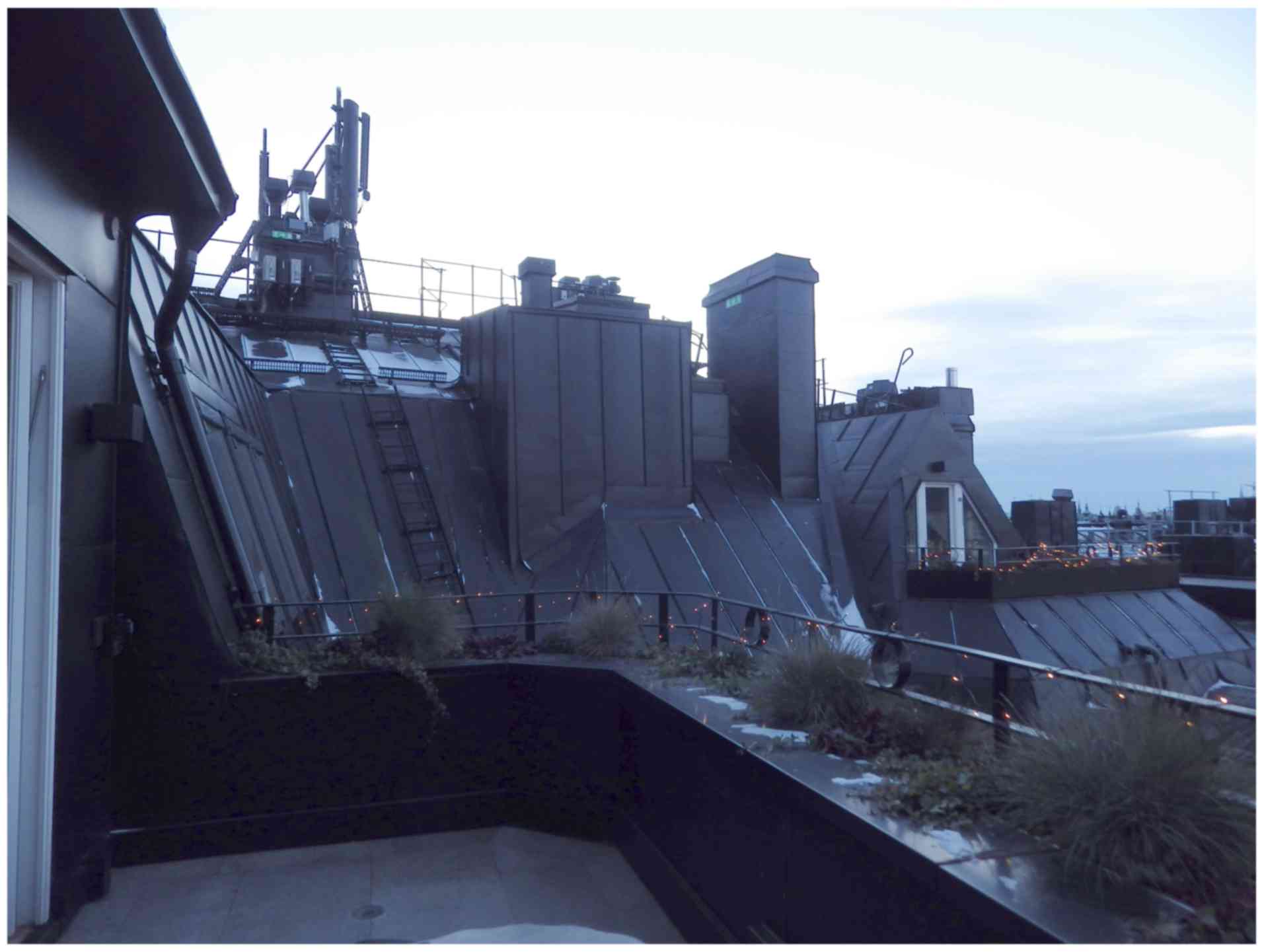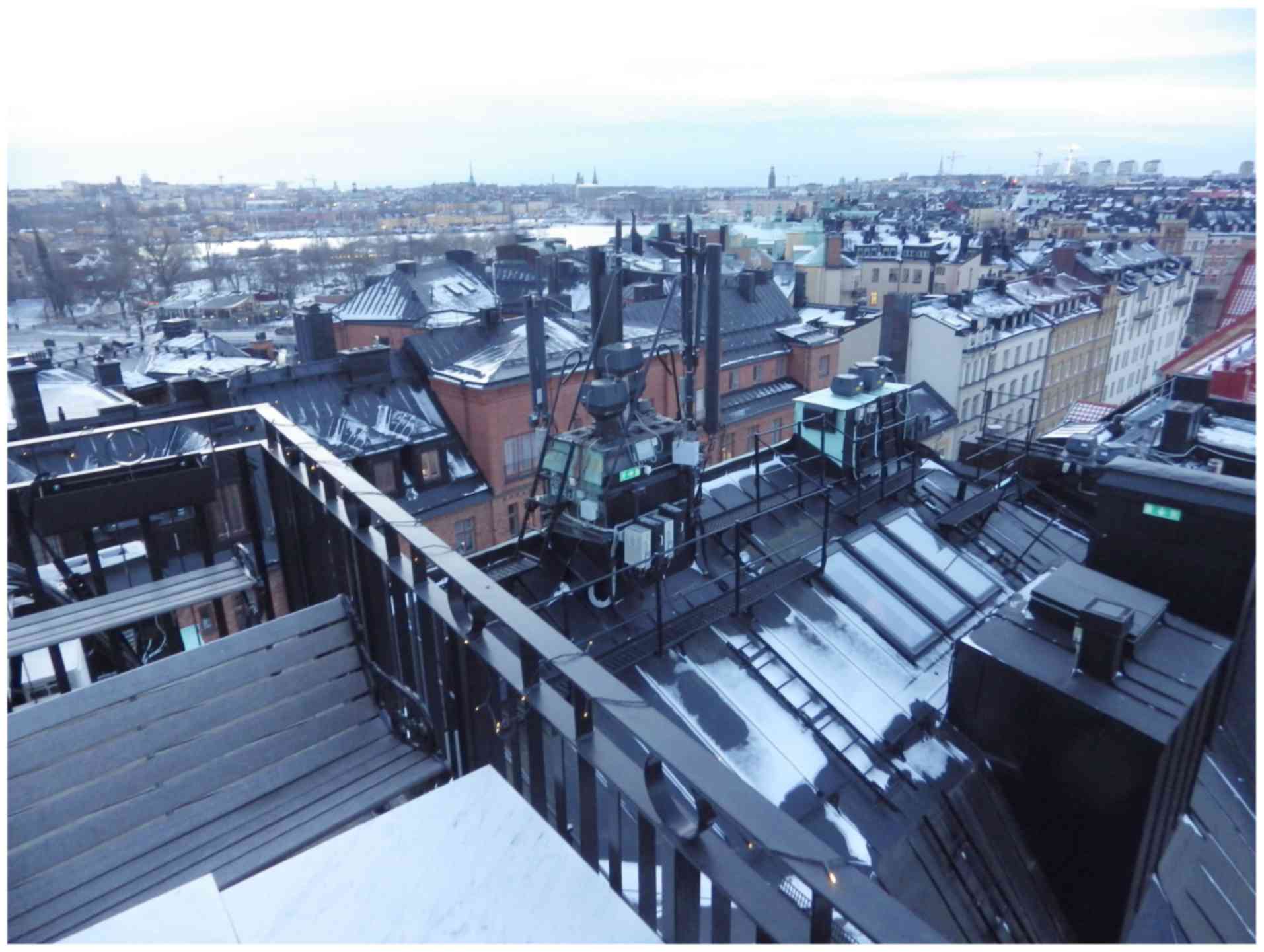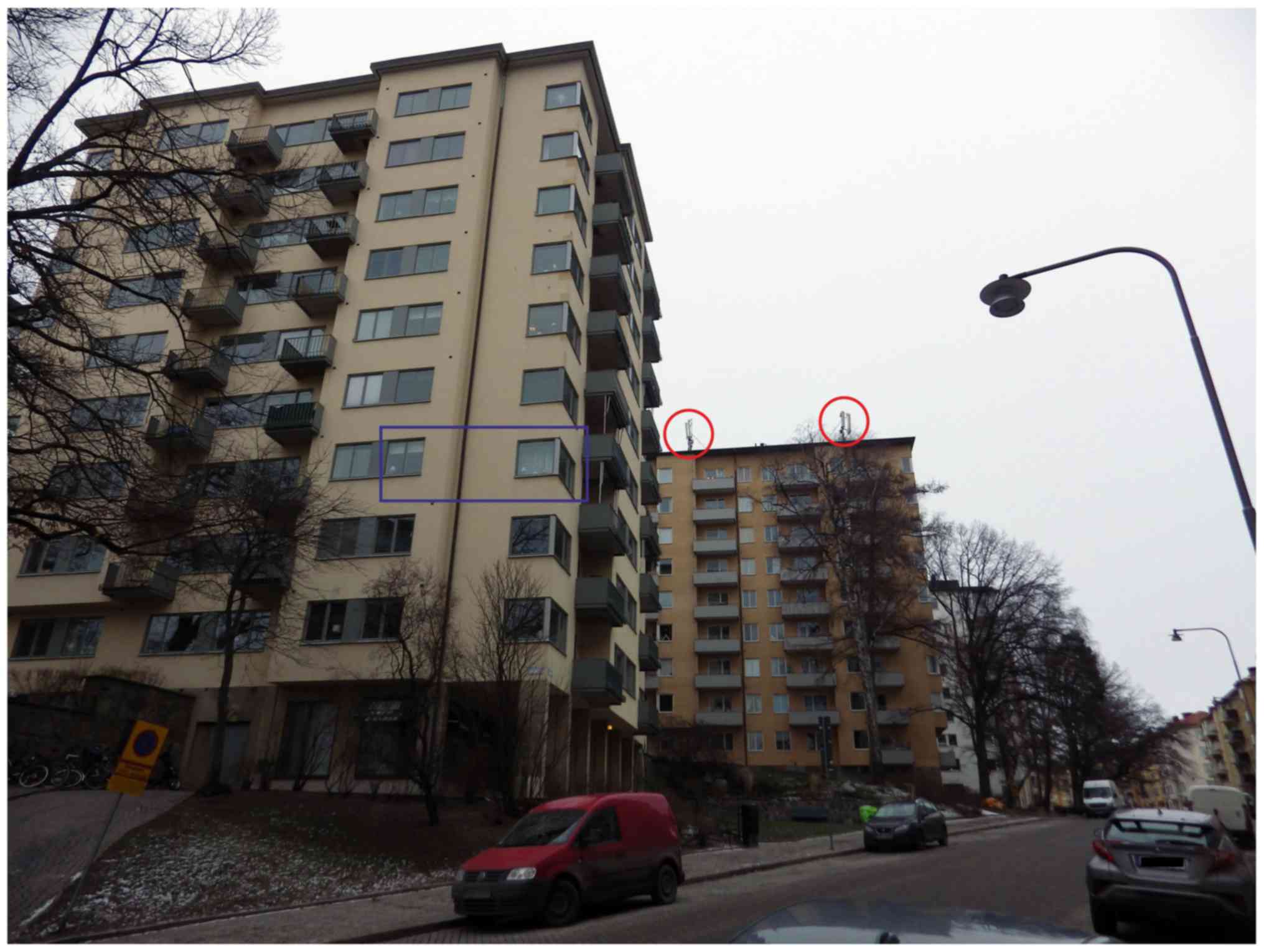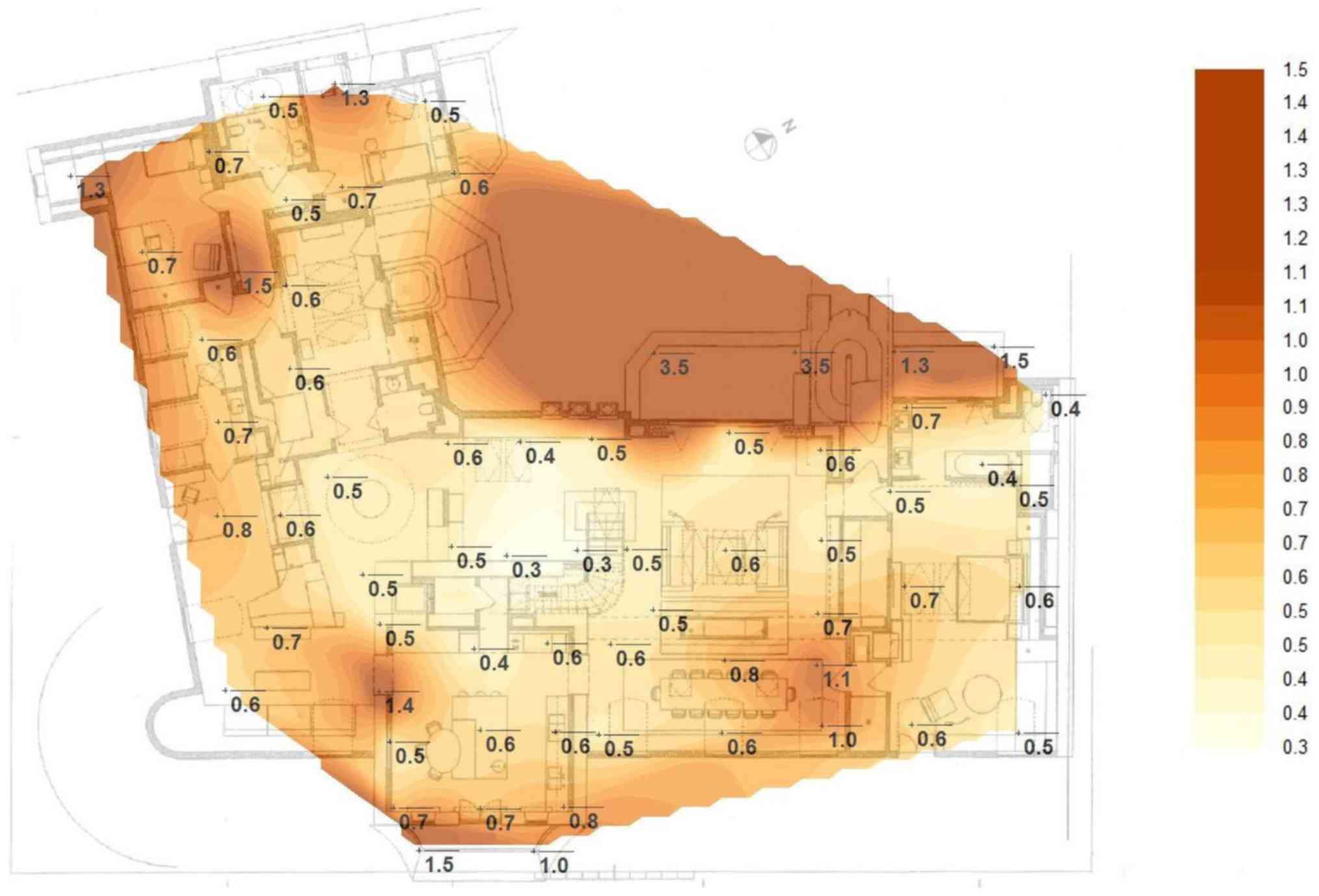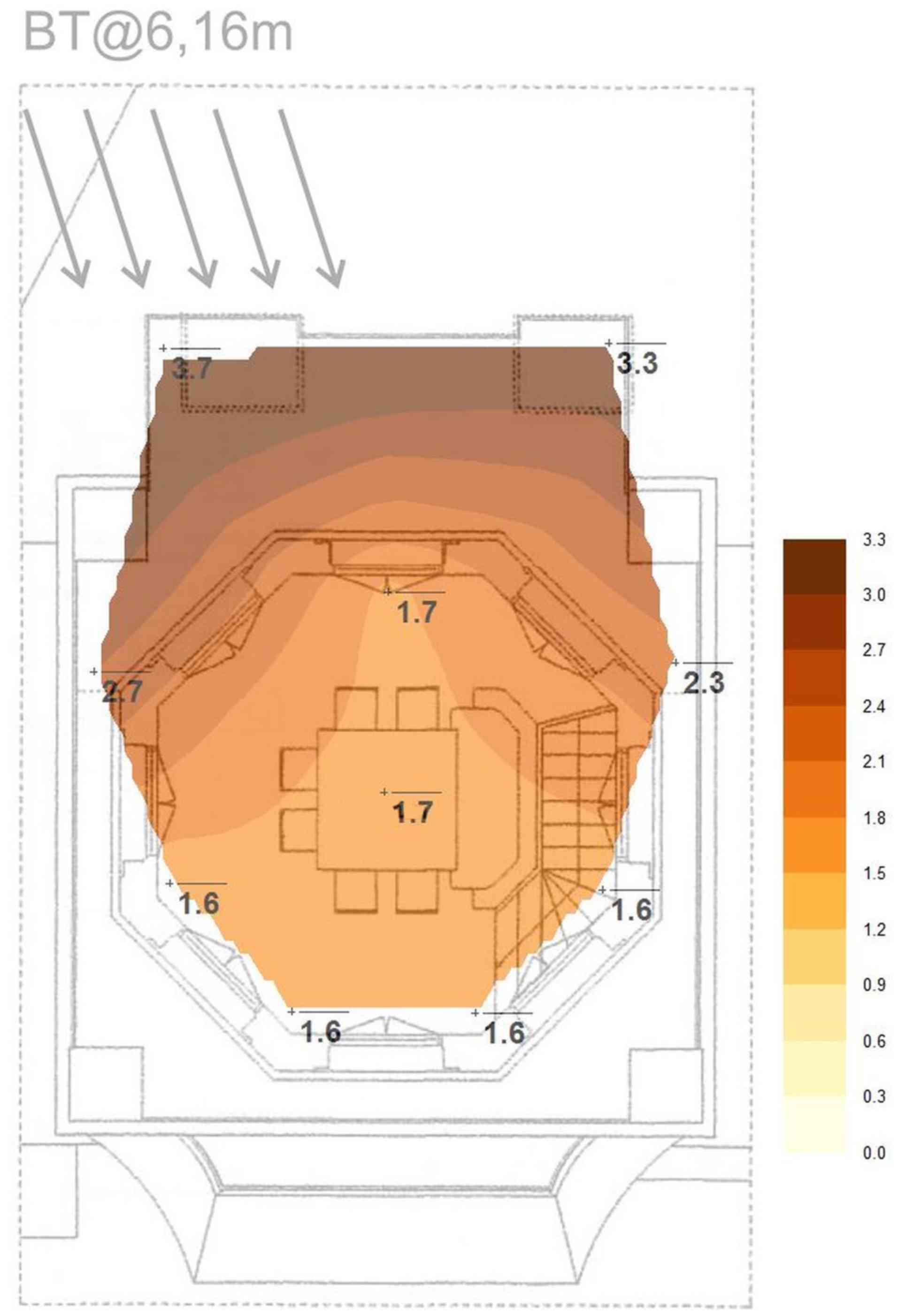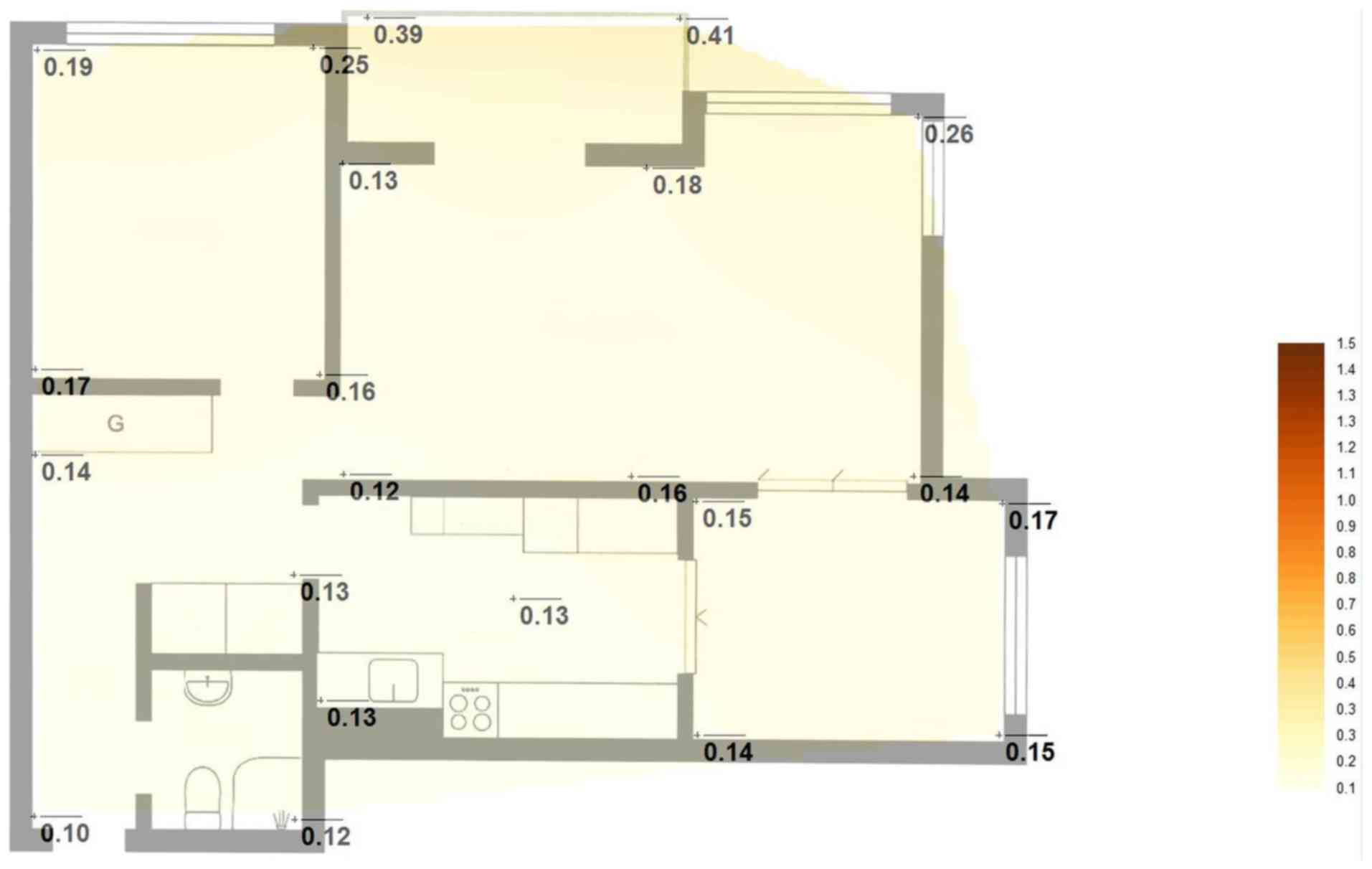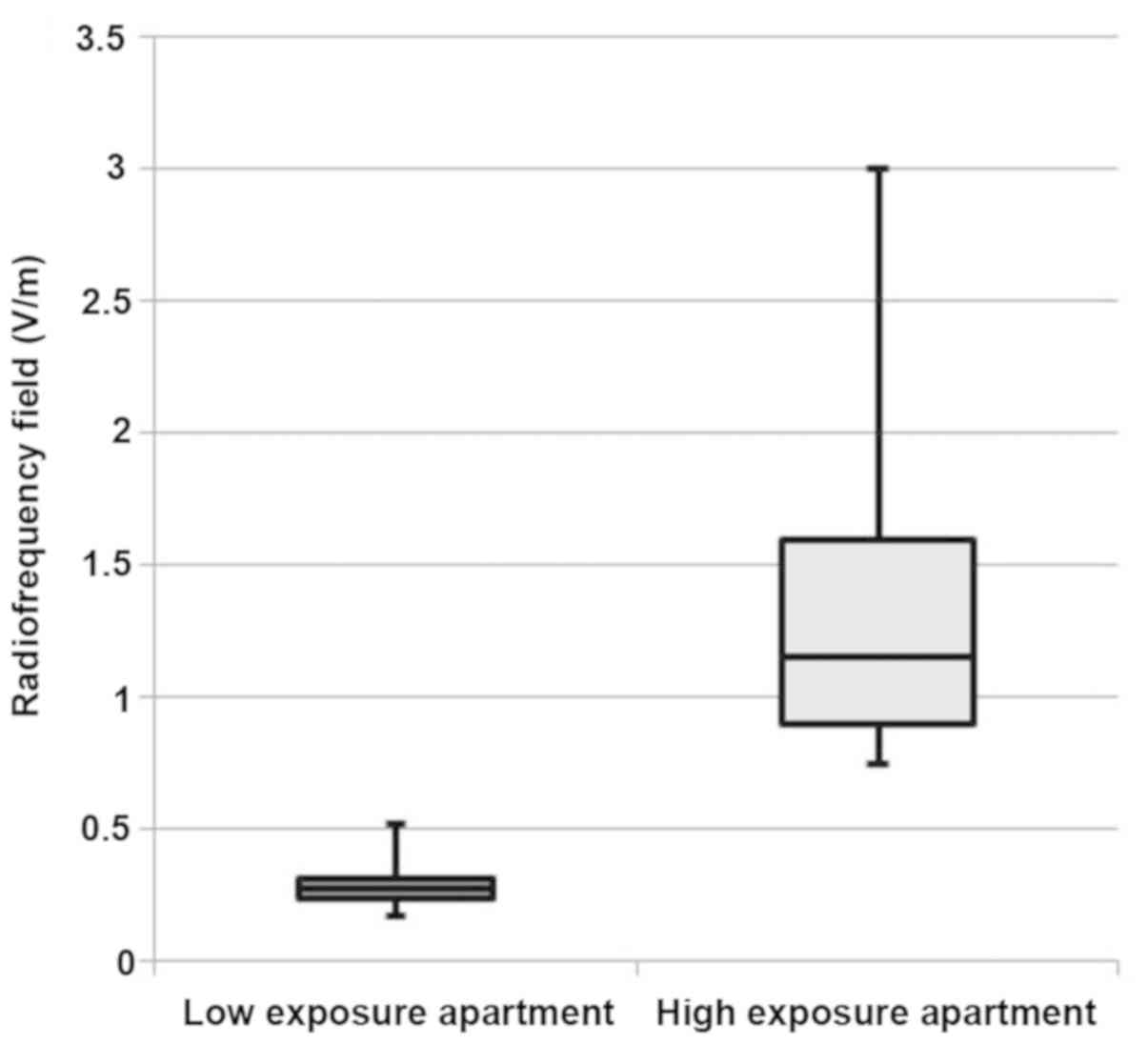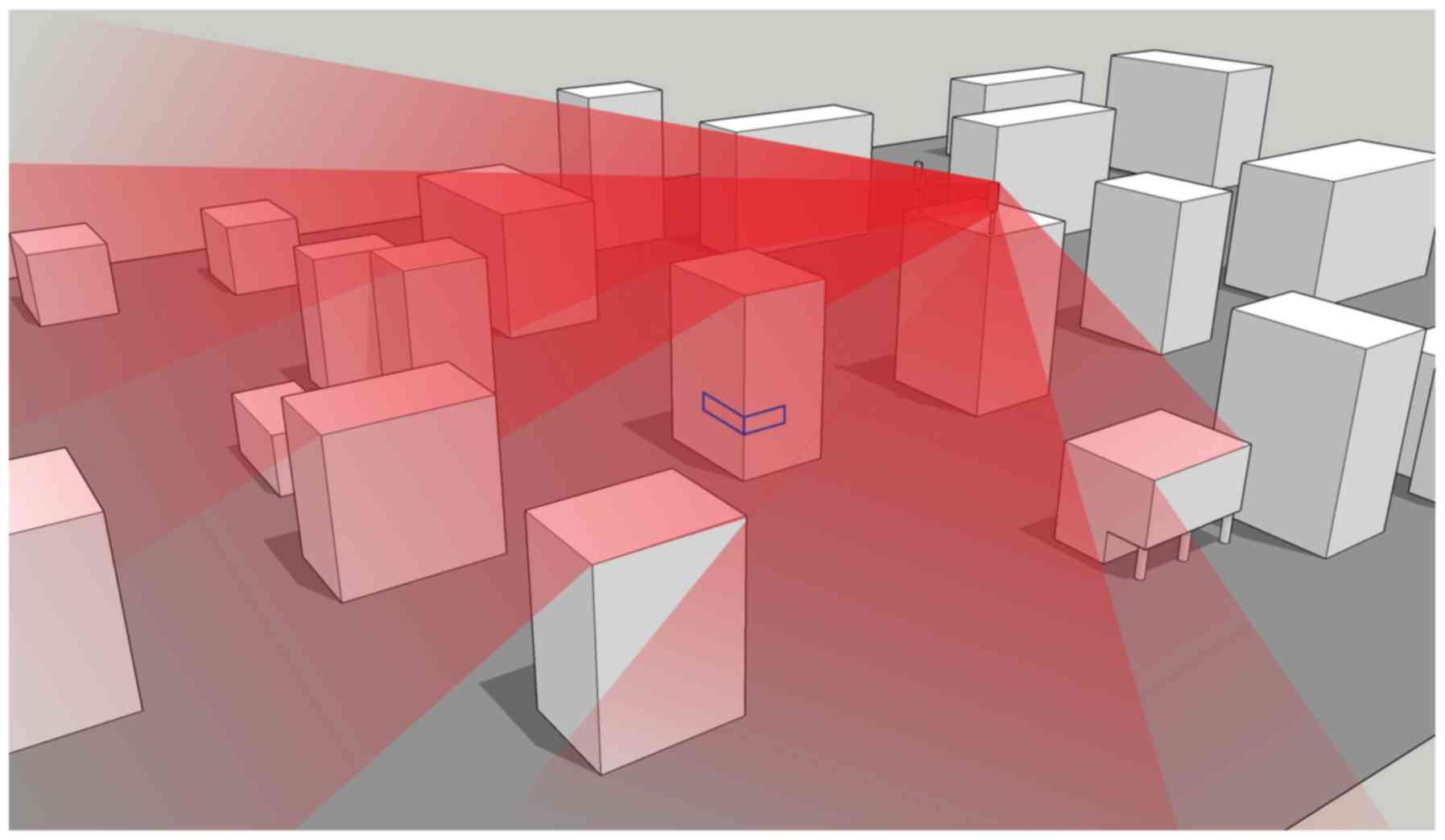|
1
|
Urbinello D, Joseph W, Verloock L, Martens
L and Röösli M: Temporal trends of radio-frequency electromagnetic
field (RF-EMF) exposure in everyday environments across European
cities. Environ Res. 134:134–142. 2014. View Article : Google Scholar : PubMed/NCBI
|
|
2
|
Gajšek P, Ravazzani P, Wiart J, Grellier
J, Samaras T and Thuróczy G: Electromagnetic field exposure
assessment in Europe radiofrequency fields (10 MHz-6 GHz). J Expo
Sci Environ Epidemiol. 25:37–44. 2015. View Article : Google Scholar : PubMed/NCBI
|
|
3
|
Sagar S, Struchen B, Finta V, Eeftens M
and Röösli M: Use of portable exposimeters to monitor
radiofrequency electromagnetic field exposure in the everyday
environment. Environ Res. 150:289–298. 2016. View Article : Google Scholar : PubMed/NCBI
|
|
4
|
Baltrėnas P, Buckus R and Vasarevičius S:
Research and evaluation of the intensity parameters of
electromagnetic fields produced by mobile communication antennas. J
Environ Eng Lan Manage. 20:273–284. 2012. View Article : Google Scholar
|
|
5
|
Hardell L, Koppel T, Carlberg M, Ahonen M
and Hedendahl L: Radiofrequency radiation at Stockholm central
railway station in Sweden and some medical aspects on public
exposure to RF fields. Int J Oncol. 49:1315–1324. 2016. View Article : Google Scholar : PubMed/NCBI
|
|
6
|
Hardell L, Carlberg M, Koppel T and
Hedendahl L: High radiofrequency radiation at Stockholm old town:
An exposimeter study including the royal castle, supreme court,
three major squares and the Swedish Parliament. Mol Clin Oncol.
6:462–476. 2017. View Article : Google Scholar : PubMed/NCBI
|
|
7
|
Carlberg M, Hedendahl LK, Koppel T and
Hardell L: High ambient radiofrequency radiation in Stockholm city,
Sweden. Oncol Lett. 17:1777–1783. 2019.PubMed/NCBI
|
|
8
|
Hardell L, Carlberg M, Hedendahl LK,
Koppel T and Ahonen M: Environmental radiofrequency radiation at
the Järntorget Square in Stockholm Old Town, Sweden in May, 2018
compared with results on brain and heart tumour risks in rats
exposed to 1.8 GHz base station environmental emissions. World Acad
Sci J. 1:47–54. 2018.
|
|
9
|
Hardell L, Carlberg M and Hedendahl LK:
Radiofrequency radiation from nearby base stations gives high
levels in an apartment in Stockholm, Sweden: A case report. Oncol
Lett. 15:7871–7883. 2018.PubMed/NCBI
|
|
10
|
Zothansiama, Zosangzuali M, Lalramdinpuii
M and Jagetia GC: Impact of radiofrequency radiation on DNA damage
and antioxidants in peripheral blood lymphocytes of humans residing
in the vicinity of mobile phone base stations. Electromagn Biol
Med. 36:295–305. 2017. View Article : Google Scholar : PubMed/NCBI
|
|
11
|
Aerts S, Deschrijver D, Verloock L, Dhaene
T, Martens L and Joseph W: Assessment of outdoor radiofrequency
electromagnetic field exposure through hotspot localization using
kriging-based sequential sampling. Environ Res. 126:184–191. 2013.
View Article : Google Scholar : PubMed/NCBI
|
|
12
|
Estenberg J and Augustsson T: Extensive
frequency selective measurements of radiofrequency fields in
outdoor environments performed with a novel mobile monitoring
system. Bioelectromagnetics. 35:227–230. 2014. View Article : Google Scholar : PubMed/NCBI
|
|
13
|
Manassas A, Boursianis A, Samaras T and
Sahalos JN: Continuous electromagnetic radiation monitoring in the
environment: Analysis of the results in Greece. Radiat Prot
Dosimetry. 151:437–442. 2012. View Article : Google Scholar : PubMed/NCBI
|
|
14
|
Schoeni A, Roser K and Röösli M: Memory
performance, wireless communication and exposure to radiofrequency
electromagnetic fields: A prospective cohort study in adolescents.
Environ Int. 85:343–351. 2015. View Article : Google Scholar : PubMed/NCBI
|
|
15
|
Schoeni A, Roser K and Röösli M: Symptoms
and the use of wireless communication devices: A prospective cohort
study in Swiss adolescents. Environ Res. 154:275–283. 2017.
View Article : Google Scholar : PubMed/NCBI
|
|
16
|
Nittby H, Brun A, Eberhardt J, Malmgren L,
Persson BR and Salford LG: Increased blood-brain barrier
permeability in mammalian brain 7 days after exposure to the
radiation from a GSM-900 mobile phone. Pathophysiology. 16:103–112.
2009. View Article : Google Scholar : PubMed/NCBI
|
|
17
|
Sirav B and Seyhan N: Effects of GSM
modulated radio- frequency electromagnetic radiation rbon
permeability of blood-brain barrier in male & female rats. J
Chem Neuroanat. 75:123–127. 2016. View Article : Google Scholar : PubMed/NCBI
|
|
18
|
Yakymenko I, Tsybulin O, Sidorik E,
Henshel D, Kyrylenko O and Kyrylenko S: Oxidative mechanisms of
biological activity of low-intensity radiofrequency radiation.
Electromagn Biol Med. 35:186–202. 2016. View Article : Google Scholar : PubMed/NCBI
|
|
19
|
Burlaka A, Tsybulin O, Sidorik E, Lukin S,
Polishuk V, Tsehmistrenko S and Yakymenko I: Overproduction of free
radical species in embryonal cells exposed to low intensity
radiofrequency radiation. Exp Oncol. 35:219–225. 2013.PubMed/NCBI
|
|
20
|
Megha K, Deshmukh PS, Banerjee BD,
Tripathi AK, Ahmed R and Abegaonkar MP: Low intensity microwave
radiation induced oxidative stress, inflammatory response and DNA
damage in rat brain. Neurotoxicology. 51:158–165. 2015. View Article : Google Scholar : PubMed/NCBI
|
|
21
|
Buchner K and Eger H: Changes of
clinically important neurotransmitters under the influence of
modulated RF-fields-a long term study under real-life conditions.
Umwelt Medizin-Gesellschaft. 24:44–57. 2011.
|
|
22
|
Augner C, Hacker GW, Oberfeld G, Florian
M, Hitzl W, Hutter J and Pauser G: Effects of exposure to GSM
mobile phone base station signals on salivary cortisol,
alpha-amylase, and immunoglobulin A. Biomed Environ Sci.
23:199–207. 2010. View Article : Google Scholar : PubMed/NCBI
|
|
23
|
Eskander EF, Estefan SF and Abd-Rabou AA:
How does long term exposure to base stations and mobile phones
affect human hormone profiles? Clin Biochem. 45:157–161. 2012.
View Article : Google Scholar : PubMed/NCBI
|
|
24
|
Gandhi G, Kaur G and Nisar U: A
cross-sectional case control study on genetic damage in individuals
residing in the vicinity of a mobile phone base station.
Electromagn Biol Med. 34:344–354. 2015. View Article : Google Scholar : PubMed/NCBI
|
|
25
|
Abdel-Rassoul G, El-Fateh OA, Salem MA,
Michael A, Farahat F, El-Batanouny M and Salem E: Neurobehavioral
effects among inhabitants around mobile phone base stations.
Neurotoxicology. 28:434–440. 2007. View Article : Google Scholar : PubMed/NCBI
|
|
26
|
Gómez-Perretta C, Navarro EA, Segura J and
Portolés M: Subjective symptoms related to GSM radiation from
mobile phone base stations: A cross-sectional study. BMJ Open.
3:e0038362013. View Article : Google Scholar : PubMed/NCBI
|
|
27
|
Belpomme D, Hardell L, Belyaev I, Burgio E
and Carpenter DO: Thermal and non-thermal health effects of low
intensity non-ionizing radiation: An international perspective.
Environ Pollut. 242:643–658. 2018. View Article : Google Scholar : PubMed/NCBI
|
|
28
|
Carlberg M and Hardell L: Evaluation of
mobile phone and cordless phone use and glioma risk using the
bradford hill viewpoints from 1965 on association or causation.
Biomed Res Int. 2017:92184862017. View Article : Google Scholar : PubMed/NCBI
|
|
29
|
Baan R, Grosse Y, Lauby Secretan B, El
Ghissassi F, Bouvard V, Benbrahim-Tallaa L, Guha N, Islami F,
Galichet L and Straif K; WHO International Agency for Research on
Cancer Monograph Working Group, : Carcinogenicity of radiofrequency
electromagnetic fields. Lancet Oncol. 12:624–626. 2011. View Article : Google Scholar : PubMed/NCBI
|
|
30
|
IARC Monographs on the Evaluation of
Carcinogenic Risks to Humans, Non-Ionizing Radiation, Part
2Radiofrequency Electromagnetic Fields. 102. International Agency
for Research on Cancer; Lyon, France: 2013, http://monographs.iarc.fr/ENG/Monographs/vol102/mono102.pdfApril
16–2019
|
|
31
|
Starkey SJ: Inaccurate official assessment
of radiofrequency safety by the advisory group on non-ionizing
radiation. Rev Environ Health. 31:493–503. 2016. View Article : Google Scholar : PubMed/NCBI
|
|
32
|
Hardell L: World health organization,
radiofrequency radiation and health-a hard nut to crack (review).
Int J Oncol. 51:405–413. 2017. View Article : Google Scholar : PubMed/NCBI
|
|
33
|
Markovà E, Malmgren LO and Belyaev IY:
Microwaves from mobile phones inhibit 53BP1 focus formation in
human stem cells stronger than in differentiated cells: Possible
mechanistic link to cancer risk. Environ Health Perspect.
118:394–399. 2010. View Article : Google Scholar : PubMed/NCBI
|
|
34
|
Morgan LL, Kesari S and Davis DL: Why
children absorb more microwave radiation than adults: The
consequences. J Microsc Ultrastruct. 2:197–204. 2014. View Article : Google Scholar
|
|
35
|
Li CY, Liu CC, Chang YH, Chou LP and Ko
MC: A population-based case-control study of radiofrequency
exposure in relation to childhood neoplasm. Sci Total Environ.
435-436:472–478. 2012. View Article : Google Scholar : PubMed/NCBI
|
|
36
|
Cardis E, Armstrong BK, Bowman JD, Giles
GG, Hours M, Krewski D, McBride M, Parent ME, Sadetzki S, Woodward
A, et al: Risk of brain tumours in relation to estimated RF dose
from mobile phones: Results from five interphone countries. Occup
Environ Med. 68:631–640. 2011. View Article : Google Scholar : PubMed/NCBI
|
|
37
|
Hardell L and Carlberg M: Mobile phone and
cordless phone use and the risk for glioma-analysis of pooled
case-control studies in Sweden, 1997–2003 and 2007–2009.
Pathophysiology. 22:1–13. 2015. View Article : Google Scholar : PubMed/NCBI
|
|
38
|
Coureau G, Bouvier G, Lebailly P,
Fabbro-Peray P, Gruber A, Leffondre K, Guillamo JS, Loiseau H,
Mathoulin-Pélissier S, Salamon R and Baldi I: Mobile phone use and
brain tumours in the CERENAT case-control study. Occup Environ Med.
71:514–522. 2014. View Article : Google Scholar : PubMed/NCBI
|















